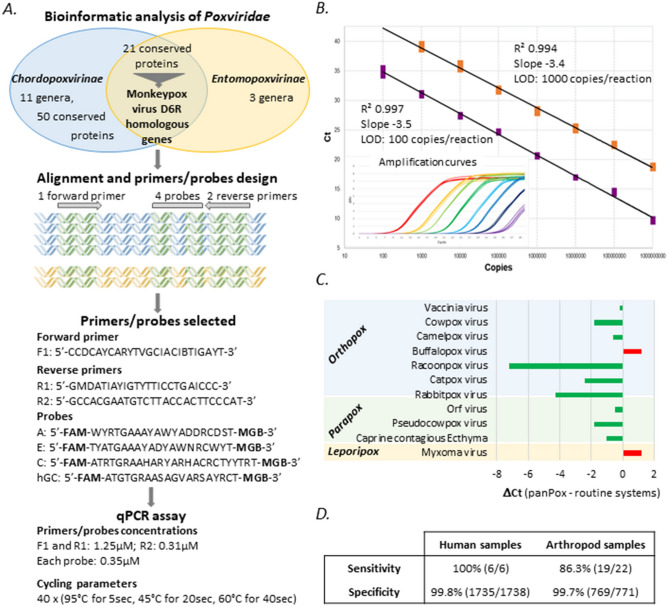Correction to: Scientific Reports 10.1038/s41598-021-81376-4, published online 19 January 2021
The original version of this Article contained an error in Figure 1 where in the R1 primer sequence two nucleotides were missing. The original Figure 1 and accompanying legend appear below.
Figure 1.
Development of a panPox real-time PCR system. (A) Workflow of panPox qPCR assay design. The bibliographic and bioinformatic analysis enables the identification of conserved genes between Chordopoxvirinae and Entomopoxvirinae. Protein blast of Chordopoxvirinae sequences on Entomopoxvirinae database identified 21 conserved proteins. Alignment of candidate genes (highest Blast scores) facilitated the design of a qPCR system combining 1 forward and 2 reverse primers and 4 probes and targeting the Monkeypox virus D6R gene and homologs. The DNA icon was obtained from the Pixabay image bank (mcmurryjulie). (B) Limits of detection and reproducibility examples. DNA standards corresponding to the Bovine papular stomatitis virus (BPSV) (orange squares) and Monkeypox virus (purple squares) are shown. The parameters of the standard curve and the limit of detection (LOD) are described next to the standard curve. The insert shows the amplification plot of Monkeypox virus standards at 109 (red), 108 (yellow), 107 (light green), 106 (dark green), 105 (light blue), 104 (dark blue), 103 (black) and 102 (purple) copies/reaction repeated in quadruplicate. (C) Comparison of the panPox system against Myxoma-specific or panOrthopoxvirus and panParapoxvirus qPCR systems (detailed in Supplemental Methods). The results are expressed as Ct value differences between panPox and routine systems. (D) Sensitivity and specificity description on a large panel of human and arthropod samples.
The original Article has been corrected.



